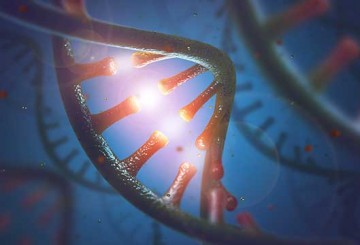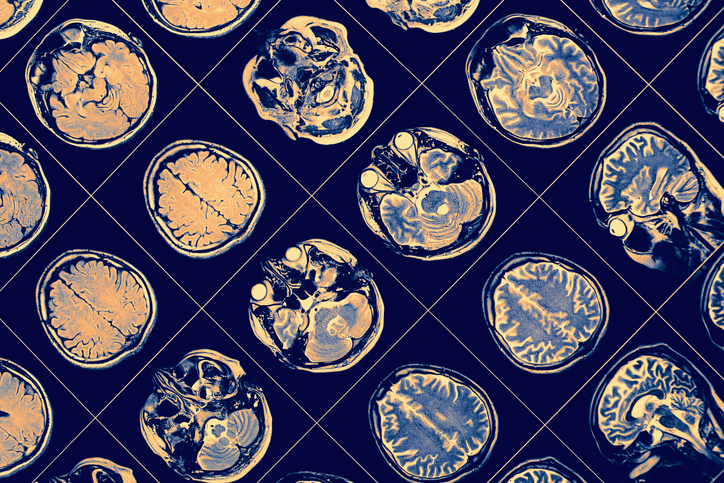
Northwestern Medicine investigators have discovered unique genetic and structural changes in endothelial cells in the brain after disrupting the blood-brain barrier in patients with recurrent glioblastoma, according to findings published in JCI Insight.
The study, led by Adam Sonabend, MD, associate professor of Neurological Surgery, may inform new therapeutic targets that promote blood-brain barrier repair after neurovascular injuries.
The blood-brain barrier is a selectively-permeable network of various cells in the brain that protects it from harmful substances while allowing essential nutrients to pass through. Endothelial cells, which line the internal layer of the brain’s vasculature, serve a particularly important role in maintaining blood-brain barrier function.
Cerebral endothelial cell injury can the result in increased blood-brain barrier permeability, contributing to neural injury in acute neurological diseases such as traumatic brain injury and ischemic stroke.
Previous work has used animal models to study this “barrier breakdown” phenomenon, but the process of blood-brain barrier repair and homeostasis in humans has remained poorly understood.
In the current study, Sonabend’s team used a novel skull-implantable ultrasound device, which they had previously demonstrated could successfully and temporarily open the blood-brain barrier using microbubbles, to help deliver chemotherapy directly to the brain in patients with glioblastoma.
In the current trial, the scientists used the device to disrupt the blood-brain barrier in six human patients with recurrent glioblastoma. Approximately one hour after the procedure, the scientists found the integrity of each patient’s blood-brain barrier was mostly restored.
“If we have this timeframe of permeability and then return to baseline function, then we can compare what we’re inducing with patients to other states of permeability, which are often associated with certain acute disease states and, in particular, things like traumatic brain injury or ischemic and hemorrhagic stroke,” said Andrew Gould, a visiting scholar in the Sonabend laboratory and lead author of the study.

Next, using single-cell RNA sequencing and transmission electron microscopy, the investigators analyzed cerebral endothelial cells that underwent blood-barrier brain disruption compared to cells that did not. In the disrupted cells, the scientists identified genetic changes unique to disrupted endothelial cells.
Particular genes of interest included decreased expression of MFSD2A, a fatty acid transporter previously implicated in preventing transcytosis (the transfer of macromolecules) across the cerebral endothelium, as well as other genes whose products are known structural components of the blood brain barrier, such as COL4A1, CDH5, and CGNL1.
These changes, according to Gould, could represent the endothelium in a state of repair after acute disturbance of barrier function. In particular, the genetic alterations could signal a response by the endothelial cells to repair barrier integrity and may be potential targets for future therapeutic agents that promote blood-brain barrier repair and permeability and, ultimately, prevent long-term neuronal injury.
“If you can identify certain genes which are uniquely upregulated and certain structural components which are significantly altered, then is there anything we could do to target those genes, to target those proteins, to target those structural changes so that we can prevent pathological blood barrier opening within those other disease states?” Gould said.
Co-authors include Farida Korobova, PhD, research assistant professor of Cell and Developmental Biology; Christina Amidei, PhD, research associate professor of Neurological Surgery; Crismita Dmello, PhD, research assistant professor of Neurological Surgery and a member of the Center for Human Immunobiology; John Bebawy, MD, ‘07 GME, chief of Neuroanesthesia in the Department of Anesthesiology; Roger Stupp, MD, the Paul C. Bucy Professor of Neurological Surgery and chief of Neuro-oncology in the Department of Neurology; Feng Yue, PhD, the Duane and Susan Burnham Professor of Molecular Medicine; and Luisa Iruela-Arispe, PhD, the chair and Stephen Walter Ranson Professor of Cell and Developmental Biology.
Sonabend, Dmello, Stupp, Yue and Iruela-Arispe are members of the Robert H. Lurie Comprehensive Cancer Center of Northwestern University. Sonabend is also a member of the Lou and Jean Malnati Brain Tumor Institute at the Lurie Cancer Center.
This work was supported by the National Institute of Health grant 1R01NS110703-01A1; National Cancer Institute grants 1U19CA264338-01, 1R01CA245969-01A1 and P50CA221747 SPORE for Translational Approaches to Brain Cancer; the Moceri Family Foundation; Tina and Victor Kedaitis; and Emily and John Kos.






